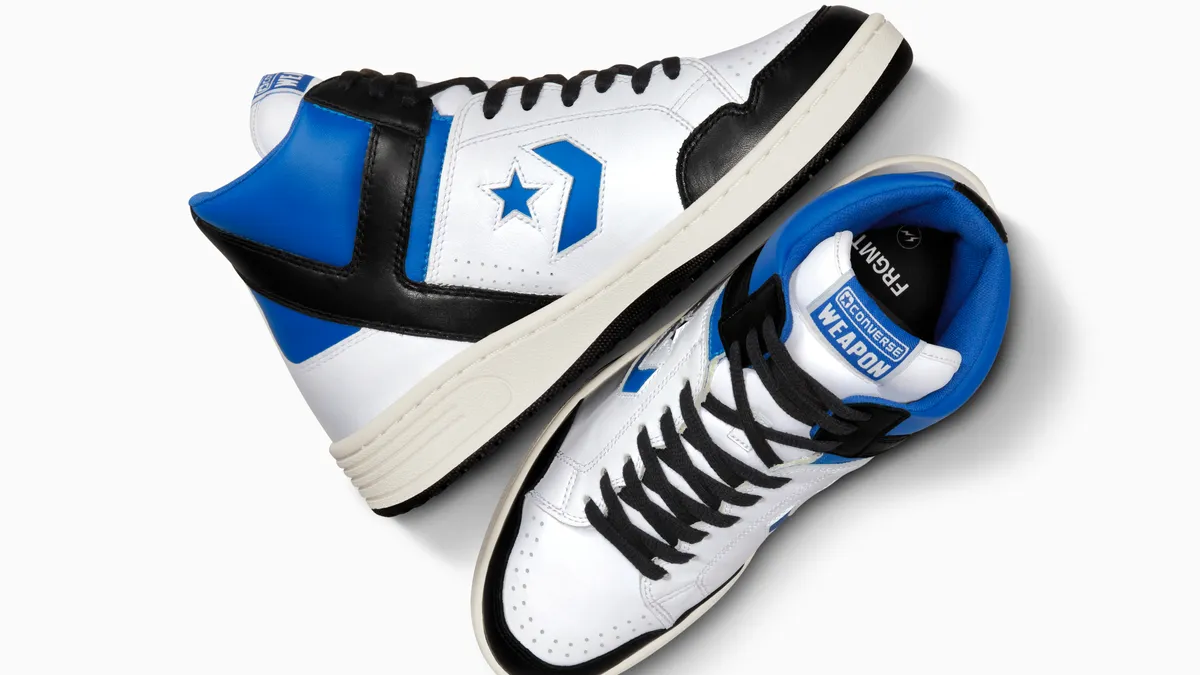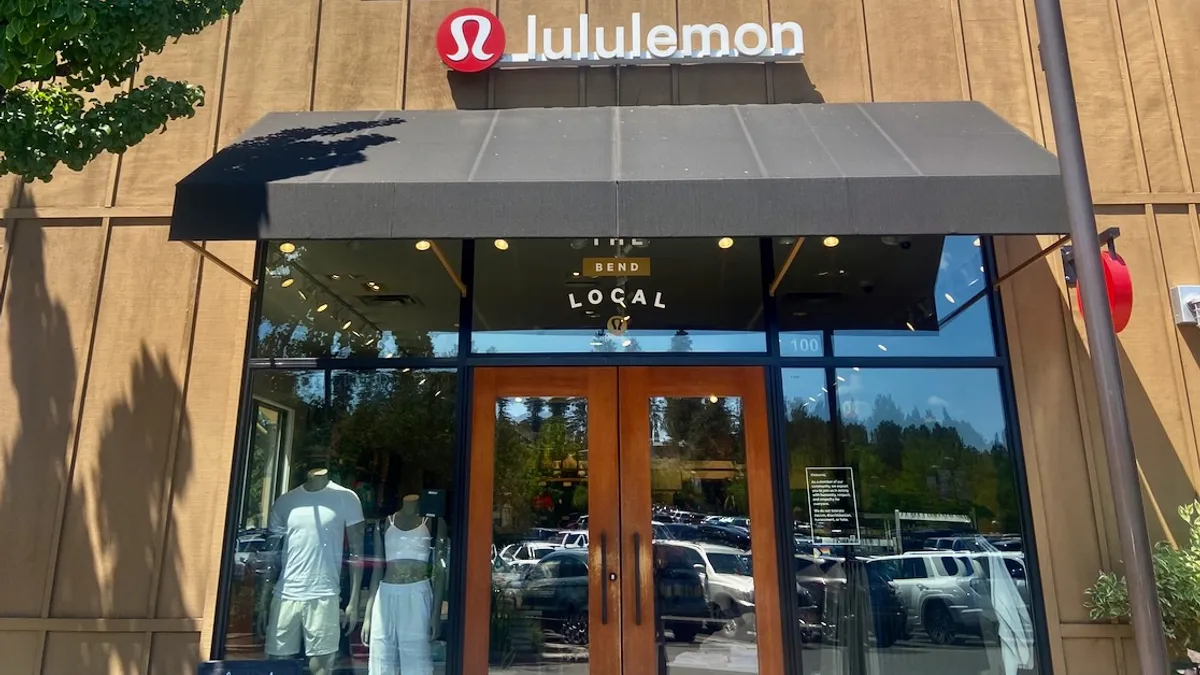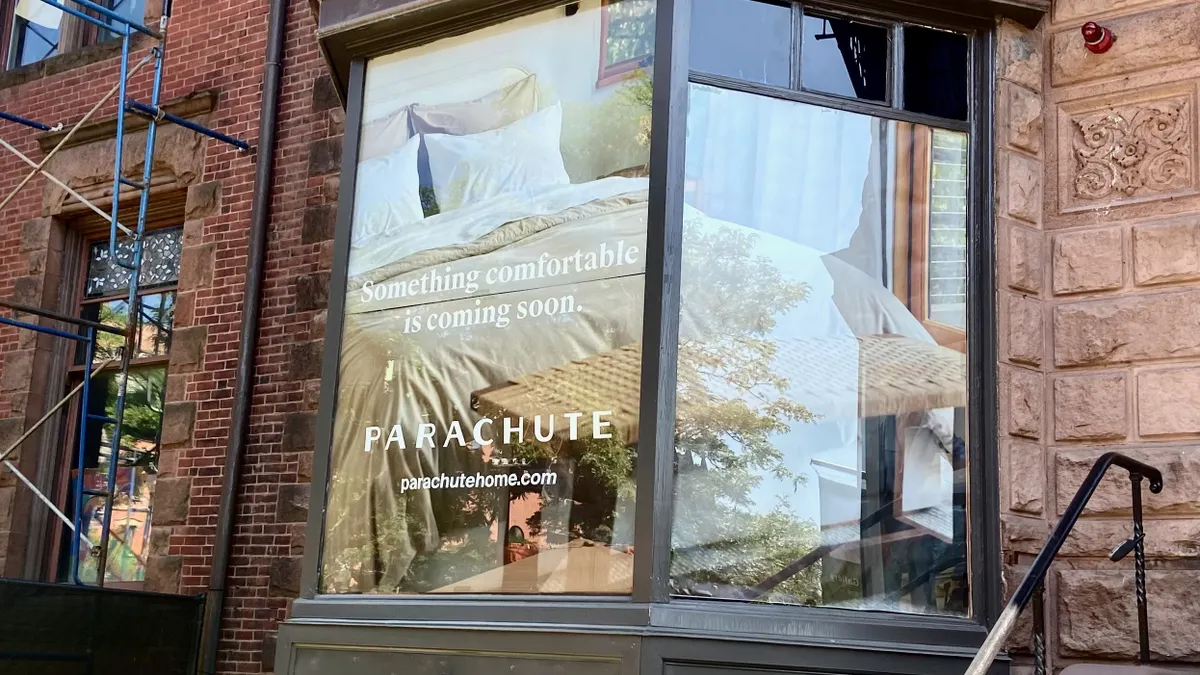The words ‘subscribe’ and ‘save’ are so closely linked in the world of retail that it’s no wonder the subscription box industry is booming. In 2017, discounting and the sale price mentality have become such standards that The Business of Fashion and McKinsey & Company’s The State of Fashion 2017 report listed “discount culture” as one of its top consumer trends of the year.
Enter subscription boxes. The implication in any box purchase is that consumers will save money, certainly, by signing up to receive a personalized selection of products designed especially for them. But also there's the promise of saving time, which is almost as important. Consumers no longer need to waste valuable time selecting outfits, browsing through options or even visiting stores. All the work is done in advance, and customers get to enjoy the fun of opening packages at home — which also plays into the increased consumer desire for self-gifting.
Subscription boxes hit all the trends, theoretically.
But there are a few quirks to the new subscription model. For one thing, most apparel subscription boxes aren’t really subscriptions at all. The word “subscription” implies a monthly commitment, but while many apparel services are lumped under the subscription moniker, most are more closely related to memberships, or clubs, or even expanded loyalty rewards programs than they are to traditional subscription models.
A lot of the programs don’t require any commitment to participate and still others offer easy ways to opt out of monthly boxes. Then there are services that rely on a sharing economy, and ask users to pay to borrow or rent clothes for a certain amount of time with a possible purchase the option. Some programs offer discounts for multiple item purchases, and some don’t even offer that. And while almost all the models offer a form of free or deeply discounted shipping, that, too, isn’t a guarantee and it often comes with restrictions. In fact, there are as many variations to the subscription model as there are demographics served.
What is a subscription service?
When the retail industry uses the blanket term “subscription service,” it refers to a variety of business models, and thus the term may not mean the same thing to everyone.
At first, before the idea began to take shape, subscription services operated much like print magazine subscriptions did. For a set fee, customers got something new in the mail based on a pre-set schedule, often monthly. The subscription service that began the current trend — Birchbox — sends subscribers a surprise collection of five or six beauty samples each month, tailored to suit their preferences for a set fee that varies depending on the length of a customer commitment. Customers are subsequently directed to Birchbox’s website if they choose to order full-sized versions of any samples.
Certainly the idea of product subscriptions isn’t new. Columbia House, founded in 1955, famously offered anyone who signed up to get eight records for a penny, roping subscribers into years-long contracts with significant product markups. The company filed for Chapter 11 bankruptcy protection in 2015, but not all early subscription fared as poorly. The Book of the Month Club, which was founded in 1926, continues to operate, albeit under a recently relaunched model.
But subscription apparel is something else entirely. To begin with, most versions aren’t so much subscriptions as they are personalized gift boxes that customers send themselves, with some guidance from fee-based stylists. Shipping and returns are often free, and customers have the option of buying as much — or as little — as they want each month. There are frequently discounts involved depending on how many products a customer decides to buy.
“For retailers, subscription services ensure there is a steady monthly revenue coming from the customer.”

Julia Fowler
Co-founder of retail and fashion technology company EDITED
The term “subscription” is muddied. Companies whose services often get lumped into the category include clothing rental services such as Le Tote, Rent the Runway and Gwynnie Bee. Recently, even Amazon jumped into the mix with its new Prime Wardrobe service. Currently in beta, the new service would allow Amazon’s Prime members to access the company’s vast and growing fashion offerings to try at home (with no obligation to buy) and receive free shipping both ways, as well as discounts for multiple item purchases.
At their core, most of these services offer similar value propositions for both consumer and retailer, even if some of the details differ. For customers, these services offer free shipping and returns, the luxury of trying on items at home, and the pleasure of getting a box of goodies delivered to their doorstep. For retailers, the business model operates much like an expanded rewards program, allowing companies to lavish discounts on long-term customers while mining them for valuable user data such as style and fit preferences.
The services also presumably hope to sidestep one of the thorniest issues in online retailing, which is the rate of returns. According to the 2017 Retail Trends Report put out by Strategy&, the global consulting team at PwC, physical fashion apparel stores experienced a return rate of about 3%, compared with about 25% for online sales. By sending curated selections and incorporating feedback, retailers may be able to significantly cut the return rate.
The big players
One of the most popular companies in this category is Stitch Fix, which sends out curated boxes filled with surprise content, with no monthly commitment. Customers are charged a $20 styling fee per box that can be applied toward the purchase of anything in the box, and have three days to make their choices. Although Stitch Fix declined to comment to Retail Dive for this story, the service posted revenue of $730 million after only five years. It also recently hired Paul Yee, the former global chief financial officer of cleaning brand Method’s parent company People Against Dirty, as its new CFO in advance of what may be an IPO.
Another boxed delivery model is Nordstrom’s Trunk Club which charges a $25 fee, waived for cardholders, and gives customers five days to make their decision. Shipping is also free both ways. However, Trunk Club has not resonated with its customers nearly as well as Stitch Fix, a problem that Nordstrom co-president Erik Nordstrom acknowledged in a November 2016 investor call. Nordstrom said that the company would strive to be “more accurate” in anticipating customer needs even as he announced that the brand has taken a $197 million write-down, which, according to Fortune, was more than half of what Nordstrom paid for the nine-year-old brand in 2014. A press release from 2016 previously noted that Nordstrom planned to streamline Trunk Club’s distribution, closing its Chicago-based distribution center by August 2017 and subsequently cutting 250 full- and part-time employees. Trunk Club also declined to comment to Retail Dive for this story, citing the public nature of its parent company.
“A subscription is the ultimate test of your merchandising skills.”

Nicholas Hodson
Principal at global strategy consultancy Strategy&
Yet another successful box-based service, e-commerce brand MM.LaFleur, markets itself to women seeking workplace-appropriate attire. As of 2016, Forbes reported the company was “on track to bring in $30 million in revenue” after only three and a half years. While the company is often discussed alongside business models such as Birchbox, it bristles at the implication that it falls under the subscription label.
“While we hope the relationship between client and stylist is an ongoing one, there is no subscription obligation,” Annie Thorp, MM.LaFleur CMO, told Retail Dive. “I suspect some of the confusion about our business model stems from the recent proliferation of subscription services, and the assumption that any try-before-you-buy or ‘box model,’ like our Bento Box, must come tied to an ongoing subscription obligation.” However, Thorp said her company’s boxes are designed to allow customers to familiarize themselves with products and services. “We see our Bento Box as the beginning of a relationship between our customers and our company,” she said. “There are no strings attached, and that is intentional.”
For a true subscription model, there are specialized apparel services such as Kate Hudson’s Fabletics, which charges $49 for a monthly activewear subscription, with the ability to skip a month and receive sign-up bonuses. And Five Four Club, a menswear subscription that, according to its website, charges $60 a month for “an individually curated package of up to three items from our seasonal collection until you pause or cancel.”
Who uses subscription services?
The typical subscription service customer is a female in her early 40s with an income of roughly $78,000, Julia Fowler, co-founder of retail and fashion technology company EDITED, told Retail Dive.
While the most popular subscription service categories are in fashion and beauty, she said, there are a vast number of other subscriptions, including Dollar Shave Club (acquired by Unilever for $1 billion), which sells razors; Loot Crate, which offers geek and gaming merchandise; and BarkBox, which provides dog toys, treats and gifts.
Men now also represent a growing consumer base and NPD Checkout Tracking data suggests the younger men in particular are gravitating toward the subscription model.
“Looking at a group of retailers and breaking down the groups into millennial men aged 18-34 and men over 34, we observed key differences between the segments,” Marshal Cohen, chief industry analyst of Retail at NPD Group, told Retail Dive. “Millennial men spent more at Bonobos and Asos than older men, but older male consumers spent more on average at Trunk Club ($1,075) than younger millennial men ($867).”
That disparity is likely a reflection of Trunk Club’s higher price tag, coupled with the potential for greater disposable income that often accompanies older age, Cohen said. “Although both demographics were active buyers, this data suggested that Trunk Club should focus their marketing efforts on the older male cohort,” he said.
Benefits and drawbacks
Regular customers with a healthy wallet size are certainly an appealing draw for companies looking to test subscription models. “For retailers, subscription services ensure there is a steady monthly revenue coming from the customer,” Fowler said. “However, the disadvantage is that with so much competition in the market, brands continually need to assess their price points, assortments, and ability to meet the customer’s needs, lest the consumer cancel or choose to go to another retailer.”
With reports claiming the existence of more than 2,000 subscription services in the U.S. alone, it's unlikely this number of services will continue in the long-term, Fowler said. “For a subscription brand to thrive, it needs to analyze its pricing, assortments, customer preferences and other trends so that it can continue to provide a competitive offering in a highly saturated market.”
That means that for a subscription service to succeed, it has to offer a unique value proposition, and be able to repeat that regularly. “Subscription services provide retailers the opportunity to surprise, delight, curate and educate,” Cohen said. “This kind of service gives the retailer constant access to the customer’s preferences, likes, and dislikes, and repeat opportunities to broaden their knowledge of the customer and get it right with customers who will hopefully stay with the service.”
“If you’re struggling with picking the mark anyway, with identifying what’s hot this month, then subscription’s not going to save you.”

Nicholas Hodson
Principal at global strategy consultancy Strategy&
But, if the retailer doesn't get it right, they risk alienating a customer. Certainly, not all brands are up to the task.
“A subscription is the ultimate test of your merchandising skills,” Nicholas Hodson, principal at global strategy consultancy Strategy&, part of the PwC network, told Retail Dive. "If you understand your customer well enough, and can send something every week, or every month, or every quarter, and can be confident you’re only getting a limited return rate, then a brand knows what it needs to buy and what it needs to sell. And that’s a nice place to be in retail.” That said, finding the right balance isn’t a given. “If you’re struggling with picking the mark anyway, with identifying what’s hot this month, then subscription’s not going to save you,” Hodson said.
While everyone in retail is looking for the magic trick that will save brands from declining traffic and shaky consumer loyalty, even the best subscription model is only as strong as a brand’s connection to its customers.
Subscriptions may be an ideal solution for brands whose already-committed consumers want to dig deeper into their brand’s offerings, but the model won’t work for brands that can’t find a common language with their customers. “While there’s a contingent of customers who’ll look for sameness and consistency, for most, there’s the danger of subscription fatigue if retailers aren’t constantly reinventing the offer," Cohen said. "Retailers therefore need to figure out how to sustain the experiential sense of surprise, and to do that, they need to constantly broaden their knowledge of their shoppers.”
That's where data comes in.
Retailers and brands can use what they know about customers to deepen connections and expand or create loyalty programs. A subscription model might also be a natural evolution from certain extant loyalty programs looking to connect to consumers in new ways.
With considerable competition in the space, it’s critical for subscription services to have a clear differentiation and personalized experience, Fowler said. Price point must also be psychologically appealing to the consumer, and the service must make the entire experience convenient — up to and including cancelation, if it comes to that. “In recent years, some subscription services have come under fire for not having clear disclosures about their billing practices, with some consumers finding unwanted charges on their credits cards and finding it difficult to unsubscribe,” Fowler said. “Additionally, if the subscription over time does not provide items that meet the consumer’s preferences, it can lead to high levels of churn.”
Not just a fad
The question moving forward will be whether the subscription model is poised to disrupt a retail industry seeking innovation, or whether it’s just the next iteration of home shopping. Some analysts are skeptical. “Are these subscriptions anything more than a curiosity?” Hodson asked. “Did book clubs ever sell more than an insignificant amount, compared to the overall book industry?”
Time may tell. Certainly, the trend hasn’t peaked. Everyday, new players such as Condé Nast are getting into the game, while established brands, such as Stitch Fix, expand into new categories, including men’s, plus size and maternity. “Research from The NPD Group’s Checking Tracking service shows that the subscription model is working, and growing, and is one that some larger retailers have implemented with some success,” Cohen said. “Other retailers can — and should — also consider subscriptions as a way to boost performance.”
As the category grows and matures, finding ways to keep the idea fresh will be critical for any brand’s success. “[A]fter the initial psychological thrill, it can be difficult to sustain an ongoing relationship with a customer, especially if [the consumer] feels that the level of personalized service is too costly, or doesn’t meet their preferences.”
Brands that want to succeed in this currently-crowded category will need to fight for consumer attention in advance of what will certainly be a culling, somewhere down the road. While subscription services don't seem to be a fad, according to NPD data, they do need to answer a consumer need to remain sustainable long-term.
“Given that there are now thousands of subscription services, there’s more than a strong chance many will not survive, and we’d venture to say that those that aren’t rooted in some sense of usefulness or purpose, are not going to be able to sustain themselves," Cohen said. "Ultimately, it’s much more than what’s in the box, it’s what the contents all add up to.”






















